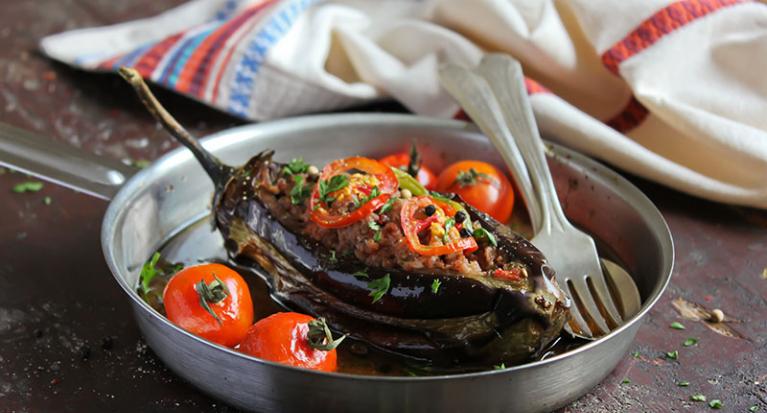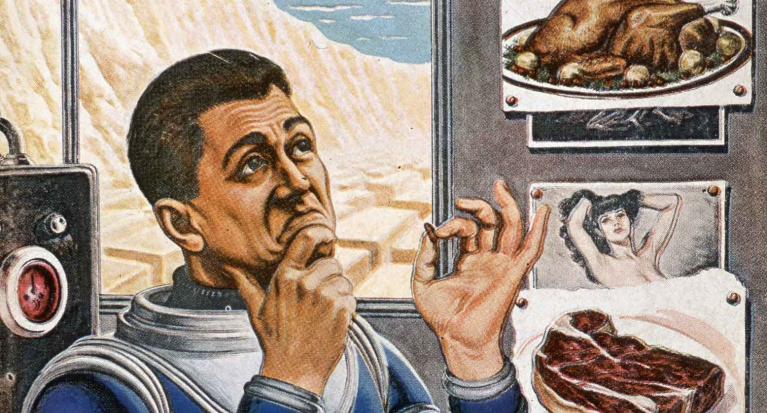Canned food – an instrument of power
Get hold of the key to the larder!
Collection of ancient cans at Port Lockroy (Antarctica).
Serge Ouachée/CC-BY-SA
The first steps to freeing humanity freeing from hunger came with the scientific understanding of age-old practice of preservation of food and the discovery of the chemical processes by which cause food to spoil. On the technical front, in the early 19th century, Nicolas Appert(2) published a book about his invention of preserving food in glass jars(3). He was convinced that it would provide a way to safeguard against food shortages,(4) and finally make the regulation of the market and a continuous food supply a reality(5). It would take another 150 years before this prophecy was fulfilled in industrialised countries, thanks, notably, to the mechanisation of the process to preserve food.
Food surplus in the hands of the rulers
In former times, food preservation was “the most effective way of guaranteeing survival”,(6) because it reduced the spoilage of food and thus extended its shelf live. When winter came, prehistoric hunters could continue tracking game, but must also have had reserves; the Amerindian tribes had pemmican for example. With the emergence of agriculture and a sedentary lifestyle, it became vital to master techniques to store surplus food(7). Households stored their own private reserves(8), but local rulers often seized and controlled them, which proved a decisive factor in the destiny of the different social classes when times were hard.
Bread as a means of controlling the people
In reality, until the 20th century, landowners had access to the necessary provisions(9), although they also needed to be able to preserve them. Peasants without land were able to fall back on nature’s resources(10), but poor townsfolk struggled to store food and so hunger sometimes drove them to rebellion. In Ancient Rome, the elites attempted to avoid social unrest by distributing bread to the people. By the Middle Ages, inhabitants already had a large range of ready-made food at their disposal(11) but, in periods of crisis, these became depleted and/or more expensive and riots terrorised those in power.
A revolution in food preservation
With the modern era, towns assured public food reserves more and more, especially of the staple food, wheat(12). As for other foodstuffs, specialised artisans and households prepared a whole array of preserved produce using age-old techniques that had barely evolved: drying, smoking, fermenting, salting, sugaring. Experimental science improved these techniques, for instance, observing chemical processes led to an understanding of the role of water and especially that of germs in food spoilage. However, the great revolution came in the 19th century, when sterilisation and the artificial production cooling provided even more effective means to preserve food.
Canned food becomes the mainstay of the military
Napoleon was one of the promoters of these developments. As a master of mobile warfare, he was often held back by the need to relay provisions to his troops(13), and dreamed of rations that could be preserved and transported anywhere and everywhere. So he launched a competition, which Appert won by making it possible to preserve food “without fearing that it be altered by transportation or by the fact it was no longer in season”(14). This laid the foundations of our current food supply: food any time, any place, with a minimum of preparation. Progress was underway, even if in the early 20th century, for the vast majority, food production was not yet that different to what it had been in previous eras. Canned food was destined mainly for the most affluent, who used it two or three times a week(15). Even though the army was the biggest promoter of canned food(16), tinned rations for troops only came into systematic use during World War I(17) Civilian populations, however, continued to suffer from food shortages(18). In Switzerland, during World War II, the food crisis was contained thanks to the official recommendation that households stock up on provisions(19).
Fresh products – food of the new elites?
During the “Thirty Glorious Years” of European economic growth that followed World War II, the establishment of an industrialised society of abundance(20) seemed to resolve the food issue. Appert’s wish to be able to feed the underprivileged social classes thanks to his new method of preserving food had come true. Today, however, retailers offer canned and convenience food at lower prices than fresh produce. It occurs to such an extent that experts call certain low income neighbourhoods in large North American towns “food deserts”, since shops have stopped stocking fresh food as it is too expensive for their customers and hence does not sell.
Current technology is so effective that it is no longer necessary to transform food to preserve it. Nevertheless, even though fresh food is available any time, any place, this comes at a price! Whereas canned food used to be the privilege of the elites, isn’t fresh produce now available only to those who can afford it?
- Massimo Montanari, “Vivre de faim”, in Dorothée Rippmann, Brigitta Neumeister-Taroni, Les mangeurs de l’an 1000. Archéologie et alimentation, Vevey, 2000, p. 19.
- Jean-Pierre Poulain (ed.), Dictionnaire des cultures alimentaires, Paris, 2012, p. 95.
- Nicolas Appert, The Art of Preserving All Kinds of Animal and Vegetable Substances for Several Years, trans. from the French, New York, 1812, p. 100.
- Denis A. Rohrer, Tanja Aenis, “De l’usine à l’assiette”, in Annatina Seifert (ed.), De la cuisine à l’usine. Les débuts de l’industrie alimentaire en Suisse, Vevey, 2008, p. 164.
- Martin Bruegel, “Du temps annuel au temps quotidien: la conserve appertisée à la conquête du marché: 1810-1920”, in Revue d’histoire moderne et contemporaine, n° 44, 1997, p. 41.
- Montanari, 2000, p. 19.
- Catherine Louboutin, Au Néolithique. Les premiers paysans du monde, Paris, 2008, p. 29.
- Denis Rohrer, “Provision de ménage”, in Dictionnaire historique de la Suisse (DHS), Hauterive, Gilles Attinger, t. 10 (Poma - Saitzew), 2011.
- Annatina Seifert (ed.), De la cuisine à l’usine. Les débuts de l’industrie alimentaire en Suisse, Vevey, 2008, p. 20.
- Montanari, 2000, p. 20.
- Martin Bruegel, “Le repas à l’usine: industrialisation, nutrition et alimentation populaire”, in Revue d’histoire moderne et contemporaine, t. 51, vol. 3, 2004, p. 183.
- Martin R. Schärer et al., Cooking, Eating, Purchasing, Digesting, Vevey, 2002, p. 126.
- Alain Pigeard, L’armée de Napoléon. 1800-1815. Organisation et vie quotidienne, Paris, 2000, p. 240-241.
- Appert, 1812, p. 100.
- Bruegel, 1997, p. 43.
- Food for the Community. Special Diets for Special Groups, C. Anne Wilson, Edinburgh, 1993.
- Martin Bruegel, “Un sacrifice de plus à demander au soldat: l’armée et l’introduction de la boîte de conserve dans l’alimentation française, 1872-1920”, in Revue historique, n° 596, 1995, p.280-281. / Hans Jürgen Teuteberg, Günter Wiegelmann, “Nahrungsgewohheiten in der Industrialisieriung des 19. Jahrhunderts”, in Günter Wiegelmann, Grundlagen der europäischen Ethnologie, Münster, vol. 2, 1991, p. 82.
- Rohrer, 2011.
- Rohrer, 2011. OR: Ibid.
- Martin R. Schärer, “Conservation des aliments”, in Dictionnaire historique de la Suisse (DHS), Hauterive, Gilles Attinger, t. 3 (Canada - Derville), 2004.
- Kenneth F. Kiple, Kriemhild Conee Ornelas, The Cambridge World History of Food, Cambridge, 2000, vol. 1, p. 451.
DOSSIER Trends and Turns |
| Canned food – an instrument of power | |
| The rise of the Mediterranean diet | |
| Ötzi and his diet | |
| Too much or not enough? | |
| It may look good, but is it? | |
| The perfect meal in a pill? | |
| All dossiers | |






